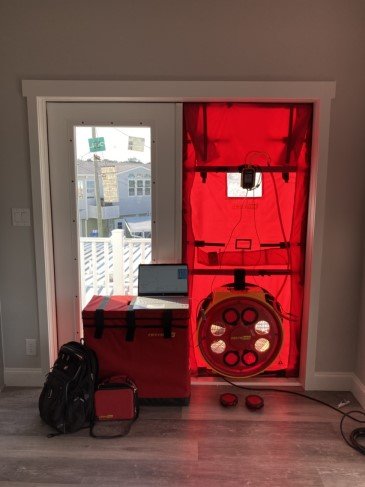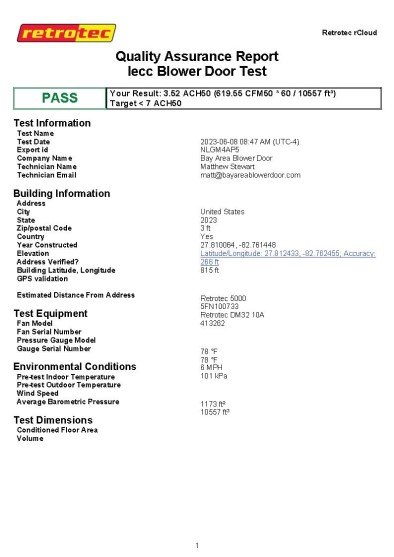Since July 2017, Florida Building Code has required all new residential construction to have a blower door test done to prove air infiltration to be under 7 air changes per hour.The higher the air change per hour, the larger the amount of air leakage in your home. Air leakage effects your air quality and can impact your energy usage.
Blower Door Tests | Department of Energy
BLDG-75-Fact-Sheet-Revised-w-Final-Format-for-BASF.pdf (floridabuilding.org)
What is a Blower Door Test?
A blower door test is a diagnostic tool used to measure the air tightness of a building. It is commonly used in residential and commercial buildings in order to identify air leaks and measure overall energy efficiency. The test is performed by a technician who attaches a powerful fan to an exterior door or window of the building and pressurizes or depressurizes the interior space.
During the test, the fan pulls air out of the building or pushes air into the building, creating a pressure differential between the inside and outside. This pressure differential reveals any leaks in the building envelope, including cracks, gaps around windows and doors, and other areas where air can escape or enter the building.
The technician also uses specialized equipment to measure the air flow rate through the fan and the pressure differential between the inside and outside of the building. This information is used to calculate the air tightness of the building and determine how much air is leaking in or out.
Blower door tests are commonly used by homeowners, builders, and energy auditors to identify opportunities for energy improvements and determine the effectiveness of air sealing efforts. They are also used by building inspectors to ensure that buildings meet energy codes and standards for air tightness.
Overall, a blower door test is an essential tool for improving the energy efficiency and indoor comfort of buildings. By identifying and sealing air leaks, building owners can reduce their energy bills, improve indoor air quality, and increase the overall longevity and durability of their structures.
Testing takes about an hour.
Results will be immediately available and can be uploaded directly to your permits in most municipalities.



